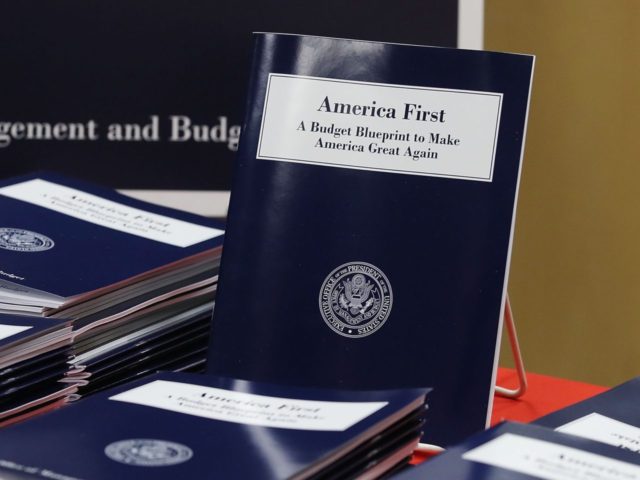President Trump’s “America First” budget targets a number of controversial California programs and notorious agencies for heavy cuts or outright elimination—while increasing funding for border security and detention of criminal aliens.
The 62-page spending plan released Thursday outlines the president’s priorities to Congress. The plan is likely to give Trump supporters plenty to cheer—while making Democrats and political insiders groan.
Border security is one area that President Trump has put his money where his mouth is. Almost $4.8 billion in increased border infrastructure (i.e. “the wall”) and enforcement of immigration laws represent a dramatic increase in funding, which will benefit California more than any other state.
The proposed funding includes:
- $2.6 Billion to fund building the wall
- $314 million to hire 500 more U.S. Border Patrol agents and 1,000 additional U.S. Immigration and Customs Enforcement agents
- $15 million to make the E-Verify work authorization program mandatory
- $1.5 billion over the prior year’s budget for detention and removal of unauthorized immigrants (this could mean larger-capacity detention centers, such as one in Adelanto in San Bernardino County).
One idea in Trump’s budget that has been less than popular with law enforcement is the proposed elimination of the State Criminal Alien Assistance Program (SCAAP), which reimburses local sheriffs and police departments close to $210 million per year for detaining criminal aliens for more than 4 days in a local jail.
Every president since Clinton created the program has marked it for elimination, but so far it has survived — in large part because it has been become a reliable funding stream for local law enforcement when state and country resources are scarce.
The bipartisan push-back on scrapping SCAAP in California will likely be fierce, because California — home to more criminal aliens than any other state — receives the lion’s share of the funding.
The Sacramento Bee reported the hysterical reactions of California’s U.S. Senators, both Democrats. Sen Dianne Feinstein said: “It’s an absolute travesty for California and every state or community that thought they had a true partner in the federal government.” Sen. Kamala Harris claimed: “It’s clear from this proposal, President Trump does not value government’s essential functions of public health, public safety, and public education.”
According to an NPR report aired on 89.3 KPCC (and NPR, too, faces an end to federal funding), President Trump wants to cut the Environmental Protection Agency’s budget by almost a third (31 percent), and “put states in charge of enforcing federal environmental laws, which is a philosophy championed by EPA Administrator Scott Pruitt.”
If states want to go above and beyond Federal EPA requirements, they’re welcome to do so — as long as they can fund it.
Trump’s focus on EPA funding is significant to California, since CalEPA receives almost 12% of its funding from the federal government. The heavy-handed enforcement tactics of state agencies like the California Air Resources Board (CARB) and the State Water Resources Control Board (SWRCB) could be dramatically curtailed by the cuts.
Other proposed cuts include $250 million to California to a teacher’s training program that did not meet the approval of U.S. Secretary of Education Betsy DeVos. According to the Los Angeles Times, DeVos said, “Taxpayers deserve to know their dollars are being spent efficiently and effectively.
While California will be harder hit than any other state by the proposed cuts — with the elimination of some programs and severe cuts to others — there may be a light at the end of the tunnel.
By scaling back the size of funding to CalEPA and therefore cutting CARB and other job-killing bureaucracies, and actually securing the border rather than simply funding programs like SCAAP as token reimbursement, President Trump is arguably sending a signal that he’s serious about real-world results — not the paper progress favored by government program administrators anxious to justify the existence of their programs.

COMMENTS
Please let us know if you're having issues with commenting.